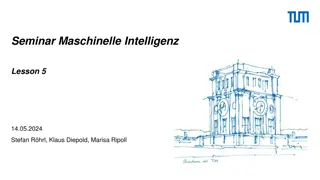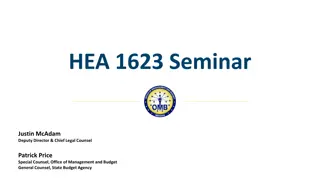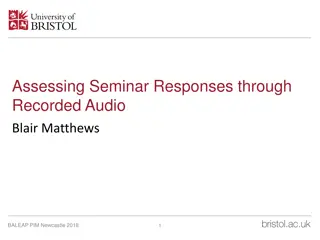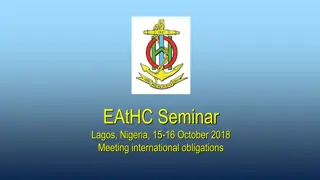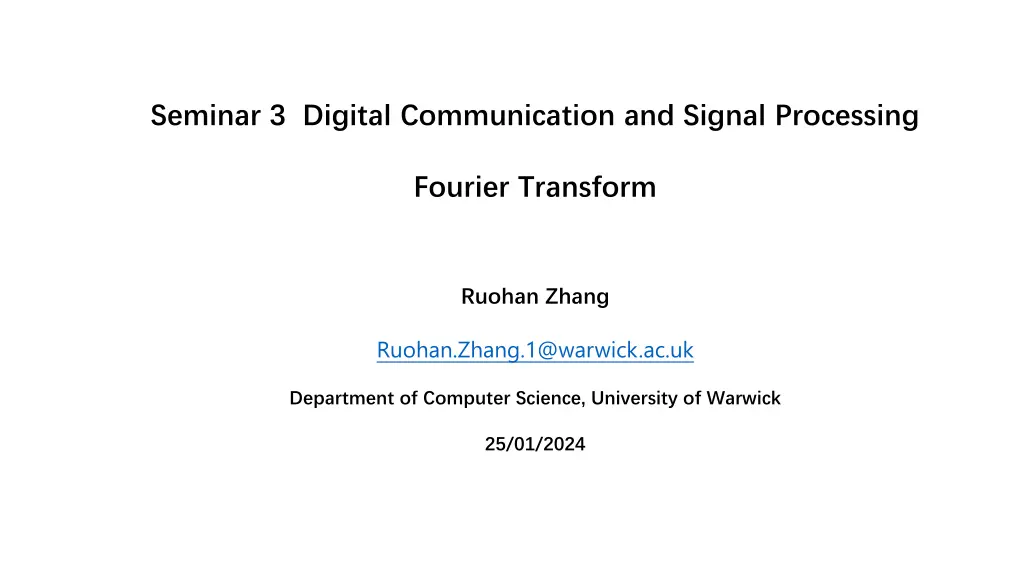
Digital Communication and Signal Processing Fourier Transform
Explore the concept of Fourier Transform in Digital Communication and Signal Processing, understanding the basis functions, orthogonality, and completeness. Work through exercises to find Fourier Transform functions and key points related to cosine and sine functions. Delve into periodic functions, odd functions, and non-periodic functions within the Fourier Transform context.
Download Presentation

Please find below an Image/Link to download the presentation.
The content on the website is provided AS IS for your information and personal use only. It may not be sold, licensed, or shared on other websites without obtaining consent from the author. If you encounter any issues during the download, it is possible that the publisher has removed the file from their server.
You are allowed to download the files provided on this website for personal or commercial use, subject to the condition that they are used lawfully. All files are the property of their respective owners.
The content on the website is provided AS IS for your information and personal use only. It may not be sold, licensed, or shared on other websites without obtaining consent from the author.
E N D
Presentation Transcript
Seminar 3 Digital Communication and Signal Processing Fourier Transform Ruohan Zhang Ruohan.Zhang.1@warwick.ac.uk Department of Computer Science, University of Warwick 25/01/2024
FT: Fourier Thm in terms of Sin and Cos simply a generalization of common knowledge of the Euclidean space { 1, cos (n t), sin(nwt), n=1,2 } are orthogonal and complete they form orthogonal bases x(t)= A0+ Ancos(nwt)+ Bnsin(nwt) n=1 n=1 T/2 A0=<1,x(t)>=1 x(t)dt T -T/2 T/2 An=< cos(nwt),x(t)>=2 x(t)cos(nwt)dt T -T/2 T/2 Bn=<sin(nwt),x(t)>=2 x(t)sin(nwt)dt T -T/2 w =2p T where A0is the d.c. term, and T is the period of the waveform.
Exercises Work out the Fourier Transform function of the given ?(?).
Key point: ?? ? d? = 0 ( ? ? is an odd function) 1 a0= 2? ? Periodic function with T = 2 ?? ? cos?d? = 0 ( an odd function times an even function equals an odd function) 1 ? ? a?= ?? ? sin?? d? 1 ? ? ??= k 0 ?sin?? d? + 0 ??sin?? d?) 1 ?( ? = 1 ?[? +[ ? 0 = ?cos??] ? ?cos??]0 - 0 2 -2 1 ?[? ? ?cos ?? + ( ? ? ?)] = ? ?cos ?? ) ( -k 1 ?[? ? ?cos ?? ? ?cos ?? ) +? = ? ?] 4? ?? ? ?? ? ?? ??? = 0 ? ?? ? ?? ???? 4? ?(sin? + 1 3sin3? + 1 5sin5? + ) ? ? =
2?(?)d? = 1 1?d? = 1 4 2 1 4[??] 1 ? 2 Key point: 1= ?0= 4 1 Periodic function with T = 4 2 2 2 4 ?(?)cos?2? 2 4 ?(?)sin?2? ??= 4?d? ??= 4?d? 2 2 1 1 1 2 ? cos?? 1 2 ? sin?? = 2? d? = 2?d? k 1 1 1 2[2? ??sin?? 1 2[ 2? ??cos?? 1 = 2?] 1 1 = 2?] 1 -1 0 2 1 -2 1 2 2? ??[sin?? 2 sin( ?? = 1 2 2? ??[cos?? 2 cos( ?? = 2)] 2)] -k 2? ??sin?? = 0 = 2 ? 2+ 2? ?(cos? 2? 1 3cos3? 2? +1 5cos5? ? ? = 2? + )
Key point: + ?(?)? 2????d? ? ? = ?? ? = Non-periodic function 1 ? 2?. In the general Fourier Transform formula, ? = ? 2????d? = 1 Here, ? represents frequency and ? represents angular velocity. ? ?? ? 0 ? ?? ? = 0 1 1 ?(?) = [ ? 2???? ? ? = d? = 2 1 2???] 1 1 -1 0 2 1 -2 ?2??? ? 2??? 2??? = -k
Knowledge point expansion: We can also use another form of Fourier Transform formula (using ? as an integral variable). Here, ? represents frequency and ? represents angular velocity. ? ? ? ???d? ? ? = ?? ? = 1 ? ? = ?? 1? = ?(?)????d? 2?





